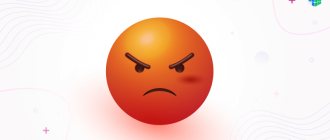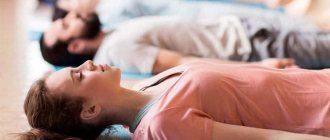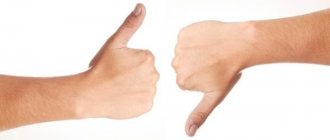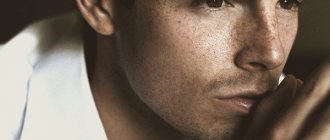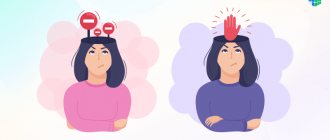Make an appointment by phone: +7 (343) 355-56-57
+7
- About the disease
- Cost of services
- Sign up
- About the disease
- Prices
- Sign up
Panic attacks are a sudden attack of severe anxiety and unreasonable fear, accompanied by somatic symptoms. The attack is accompanied by increased sweating, increased heart rate, shortness of breath, nausea, and a feeling of fear of death. When making a diagnosis, the clinical course of the attacks and their severity are taken into account, somatic diseases are excluded, against the background of which anxiety states may arise.
How does a panic attack manifest?
The main symptom of panic attacks is a spontaneous feeling of anxiety, fear or panic. Associated symptoms include:
- increased heart rate;
- sweating;
- violation of the frequency, rhythm and depth of breathing;
- a person cannot take a full breath;
- feeling of suffocation;
- chills, trembling of the limbs and whole body, internal trembling;
- nausea or abdominal pain;
- dizziness, feeling of impending loss of consciousness;
- disturbance of perception of the surrounding world, disorder of self-awareness;
- fear of death;
- fear of going crazy;
- numbness or tingling in the arms and legs;
- disturbance of night sleep;
- disorder of thinking function.
Sometimes there is an increase in temperature, abdominal pain, diarrhea, decreased vision or hearing, increased blood pressure, and unsteady gait.
Treatment
Psychological and medical treatments and medications are used to treat panic disorders.
Good results are achieved by cognitive behavioral therapy in combination with the use of antidepressants - selective serotonin reuptake inhibitors. In most cases, psychotherapy alone will be sufficient.
When treating with medications, it is important to know that these drugs have a cumulative effect, and improvement may not occur earlier than a month from the start of treatment. The course of treatment with antidepressants can last up to one year. The dosage of use is reduced gradually.
Cognitive therapy methods
Cognitive therapy uses various methods for mastering anxious thoughts. One of them is “cognitive decoupling.” When using it, the patient realizes that the thought of death and other disturbing thoughts may be erroneous.
The effect of this method is due to the fact that the amygdala of the brain, which is associated with the occurrence of panic, reacts to thoughts as a justified reason for fear, so panic arises for no reason. With “cognitive splitting,” the patient learns to control his thoughts and convince himself that what is happening to him has no reason to panic.
Another effective method of cognitive therapy is the method of “conscious self-observation” of your thoughts and feelings. When using it, the patient learns to observe his thoughts and feelings, simply noting anxiety without trying to overcome it.
Patients are advised to prepare a positive statement in advance that will reassure them during an attack (“it will pass,” “I’m safe,” “I can handle it”).
It is important to learn to stop disturbing obsessive thoughts, be distracted by something pleasant, and say “stop” to negative thoughts. Physical exercise is good for relieving panic; it reduces muscle tension and reduces the activity of the central nucleus of the amygdala. It is also useful to practice diaphragmatic breathing, which will help restore the nervous system and relieve anxiety. Diaphragmatic breathing activates the parasympathetic nervous system and relaxes the body.
Causes
There are three groups of etiological factors:
1.
Psychogenic – family quarrels, divorce, betrayal, conflicts at work, etc.
etc. The occurrence of attacks of fear is preceded by the death of a loved one, electric shock, car accident, or illness. Sometimes attacks occur after watching emotional television programs or films. 2.
Biological – changes in hormonal levels (in women during pregnancy, after childbirth, during menopause), taking hormonal contraceptives, the onset of sexual activity, painful menstruation.
Panic attacks do not include conditions caused by diseases of the endocrine system (adrenal adenoma) and hyperfunction of the thyroid gland. 3.
Physiogenic – drug use, alcohol intoxication, weather sensitivity, high physical activity, acclimatization.
Panic attacks occur mainly in patients with certain personality traits: in women with drama and a desire to attract attention; in men – constant anxiety and increased concern for their health.
Why does breathing become difficult during PA?
Controlling a panic attack is difficult. If a fair amount of adrenaline enters the bloodstream, until it dissolves, the body will react. Whether you like it or not, you will have to live through it. And when the attack begins, the unfortunate person focuses on anything but his breathing. What worries a person much more is the heart, the feeling of fear of death, and the general terrible state. The funny thing is that many people are afraid of suffocating from a panic attack, but cannot take control of their breathing.
Problems with breathing during PA occur because at such moments the patient begins to breathe frequently and shallowly. Normally, carbon dioxide and oxygen in the blood should be in a ratio of 3:1. Then the body and brain feel comfortable and relaxed.
With “panic breathing,” the proportions of oxygen and carbon dioxide become almost equal. The body begins to send alarm signals, further intensifying the panic attack. It turns out to be a vicious circle - breathing becomes difficult due to PA, but PA intensifies due to improper breathing.
It is important to know!
The more intensely you breathe (the hyperventilation effect), the hungrier you become, as deep and rhythmic breathing stimulates the production of gastric juice as well as cellular metabolism.
Instead of using volitional efforts to begin to breathe more slowly and deeply, thereby increasing the level of carbon dioxide in the blood, the VSD person begins to swallow air even more intensely with his open mouth, rushing around the apartment and trying to open all the windows wide.
The role of carbon dioxide in our body is enormous. It carries out the following processes:
- stimulates the breathing center in the brain;
- regulates the pH of blood and body cells;
- participates in the formation of necessary amino acids;
- regulates the functioning of the central nervous system;
- regulates metabolic processes;
- dilates blood vessels;
- stabilizes motor functions;
- Helps release essential enzymes.
By the way, conscious, correct breathing can very quickly stop a panic attack, relieve tension, reduce anxiety and fear. A person who controls his breathing has high psycho-emotional stability and is much less likely to succumb to anxiety and fear. One of the most powerful practices for harmonizing the soul of the body, yoga, places primary emphasis on breathing. Many spiritual practices tell us that through breathing we receive vital energy. And the more correctly a person breathes, the more mental and physical strength he has.
There are many recommendations and tips on how to breathe correctly during panic attacks. But we are all individuals and you should try different techniques to find the ones that suit you.
Interesting facts about breathing:
Fact 1
Breathing through the nose has 4 stages of filtration. When breathing through the mouth, we immediately move to the 4th stage, which can easily lead to a sore throat, tonsillitis and even ear diseases.
Fatk 2
We obtain the nitrogen necessary for the construction of cells not only from food, but also from the air. Certain microbes and bacteria living in our body produce from atmospheric nitrogen the same amino acids that we get from food and from which new cells are then built. Thus, when we breathe, we also reinforce ourselves.
Fact 3
The right lung is larger and consists of three lobes, while the left lung is smaller and consists of two lobes. Sometimes one lung is removed due to illness; people who live with one right lung find it a little easier to breathe than those who have one left lung.
Clinical picture
The duration of attacks is from 15 minutes to several hours, the frequency is from 2-3 times during the day or once a month.
As a rule, panic attacks occur suddenly, against a background of complete calm. But most patients claim that attacks more often develop under stress, in a small enclosed space, or in crowded transport. At the first attacks, a person does not understand what is happening to him. If the patient is very frightened, he suspects the presence of severe cardiovascular pathology, endocrine or nervous disorders, and calls an ambulance.
After the first panic attack, a person makes an appointment with various specialists, undergoes an examination, and suspects the presence of a rare disease. The patient concentrates excessively on his health, which aggravates the course of the attacks.
As a rule, panic attacks are repeated. Therefore, a person is constantly in tense anticipation of the next attack. If fear and anxiety arise in certain conditions and under the influence of certain factors, the patient begins to avoid similar situations. Worrying about having a panic attack in a particular location and then avoiding it is called agoraphobia. As a result of increased signs of agoraphobia, a person becomes antisocial, he is afraid to leave the house, and depressive states arise.
People aged 20-65 years are at increased risk of developing panic attacks; attacks are more common in people aged 25 to 40 years. Older people over 70 years of age are less likely to suffer from attacks.
Diagnostics
When diagnosing panic attacks, the presence of somatic diseases related to the thyroid gland, heart and respiratory diseases, and neurological problems is first excluded. The patient is also examined by a psychotherapist for the development of depression, bipolar disorder and psychopathy of various forms. The final diagnosis is made by a psychotherapist after excluding common diseases and mental disorders.
In a number of somatic and mental illnesses, symptoms reminiscent of panic attacks develop. Thus, with bronchial asthma, the patient suffers from suffocation during attacks, but during a panic attack there is no difficulty in exhaling, and wheezing characteristic of asthma is not observed.
With hypertension, attacks of fear develop when crises threaten, but they are always preceded by an increase in pressure. With panic attacks, blood pressure rises during the attack.
The difference between a panic attack and angina pectoris is that pain in the heart during an attack is not relieved by medications for heart pain, the level of markers of myocardial necrosis is within normal limits, and the pain goes away when attention is switched.
After diagnostic examinations, and if somatic causes are excluded, you can begin treatment for the independent disease “panic disorder.”
How else can you activate the parasympathetic system?
· Meditation.
Scientifically speaking, meditation is a mental action aimed at bringing the psyche into a state of deep concentration. Many scientists have long viewed meditation critically, but now there is evidence that it increases the parts of the brain responsible for the production of the happy hormone dopamine. In addition, correctly performed practices allow you to slow down, release tension in the body, and reduce the level of anxiety and anxiety.
· Yoga.
There are countless types of yoga. Among others is Sudarshan Kriya Yoga, which is considered especially useful for relieving anxiety, stress, and insomnia. To experience its effect for yourself, try this exercise for a few minutes:
- Turn on your favorite relaxing music (the sounds of the sea or the sound of the wind may be suitable)
- Close one nostril with your thumb.
- Inhale slowly through the second nostril for 5 seconds.
- Release the first nostril, close the second and exhale slowly.
Repeat for at least 7-10 rounds.
· Massage of active biological points:
- between the eyebrows;
- on the wrist;
- in the hollow between the index finger and thumb.
Belly breathing
Belly breathing is also called diaphragmatic and abdominal breathing. If you paid attention, children initially breathe naturally using their stomachs, but tension and negative situations force them to get rid of the correct technique in favor of chest breathing.
During stress, adrenaline is released into the blood, blood pressure and glucose levels increase, fat breakdown begins, blood is directed towards the brain and muscles, the chest contracts, breathing becomes shallow, fast, and intermittent. When you experience these physiological processes, you should immediately take advantage of the solution to the problem by breathing with your stomach.
In order to feel the work of the diaphragm, follow a number of simple steps:
- Sit or lie down in a comfortable, relaxed position.
- Place your left hand on your chest and your right hand on your stomach.
- Exhale slowly through your mouth.
- Then also inhale slowly through your nose so that your stomach rises above your chest.
- As you exhale, pull your stomach in. The chest should remain motionless when inhaling and exhaling.
Start practicing mindful breathing 1-2 times a day: in the morning before you want to get out of bed, and in the evening before going to bed.
What is breathing like?
Before talking about execution techniques, let's understand a little about the types of breathing itself. It happens:
· Top.
In this case, the diaphragm is practically not strained, and breathing is carried out through the upper part of the chest.
· Average
This is when air enters due to the expansion of the middle part of the chest, and the diaphragm moves down slightly.
· Nizhny.
The diaphragm is lowered as much as possible, the abdominal muscles are relaxed.
· Full.
It involves maximizing the filling of the lungs with air by combining all the techniques listed above.
· Reverse.
This is the tension of the abdominal muscles when inhaling, the lowering of the diaphragm.
· Delayed.
There is a pause between inhalation and exhalation. Often used in yoga, since the founders of the teaching implied that the body is filled with energy while holding the breath.
